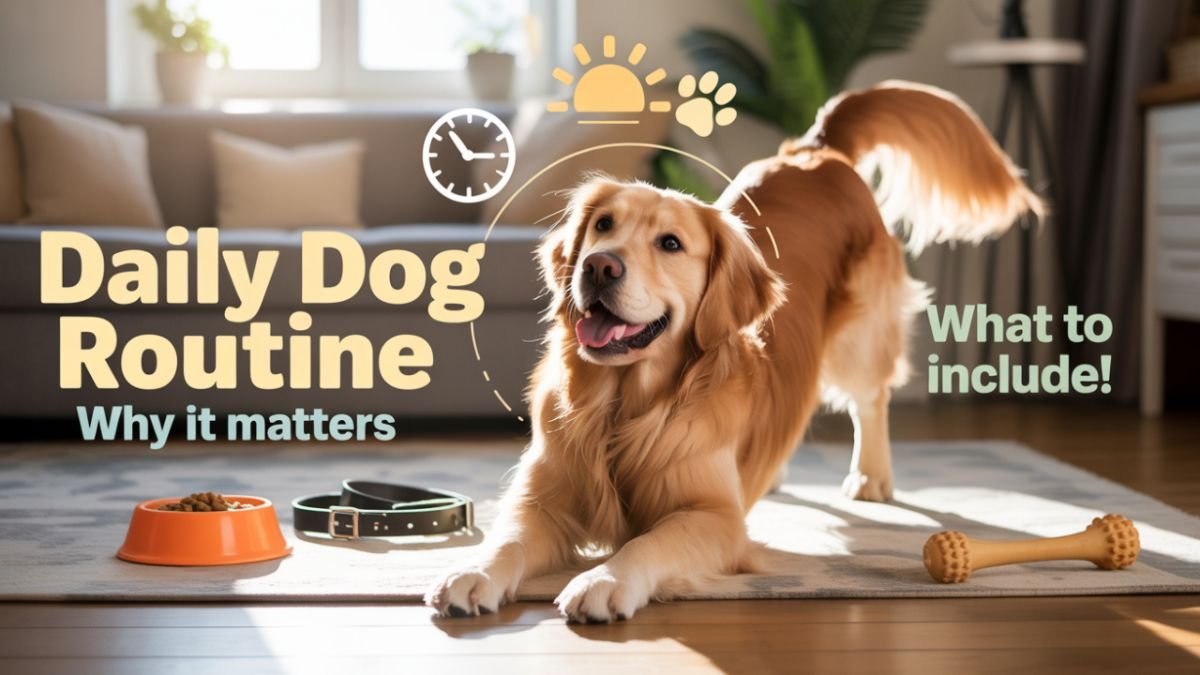If you want your dog to be not only physically fit but also mentally happy and safe, then a strong daily routine must be made for him. Much of modern dog owners out there do not realize how much daily routine matters to dogs in their behavior, happiness, and health. Here is reading material as to why daily routines for your dog are important, what you need to keep in mind, and how to set them.
Routine is important to dogs
They’re more habit-forming than humans. Once a fixed time is given for every part of their daily activities: eating, walking, sleeping and playing, their trust and confidence increases. Routine helps the dog understand when food will come, when you come home after work, when he will get to go out playing or walking. This thus reduces his stress and anxiety and thus brings about positive changes in his behavior.
What then are the different impacts that daily routine can have?
- Physical wellness: Time meals, access to fresh water, adequate exercise, and consistent washroom breaks all help keep your pet healthy. Obesity, digestion issues, and irregular bowel movements are all significantly prevented by this.
- Mental and emotional well-being: All of them give security and trust to your dog.
- For a pet owner, beneficial too: Gives you a chance to get up and move around, keeping your routine fit.
Routines for dogs of all ages
- Puppies: Cute little puppies should learn to get accustomed to the new sights, new people, and the world’s newest environment. They should be fed on fixed schedules like 3-4 times daily, taken out immediately after nap or post-meal and find time for small breaks for physical activities. This would serve to keep both mind and pet healthy as well as to help in potty training.
- New Dogs: Be it a puppy or adult, the dog is introduced at home so the day-to-day activities are along with loving environment, slowly and steadily in order to secure the new dog with a feeling of safety. The older pets feel assured that their world has not dramatically changed.
- Adult Dogs: Generally, they have two meals a day, fresh water, frequent potty breaks, a good daily walk, and finally, a handsome playtime every day, you just have to adjust this slightly keeping their age, breed, weight, and health in mind.
- Old-age/Senior Dogs: Older dogs may have some problems with understanding, attention, and memory. During this time, physical necessities might be less-light walks, short games, easy meals, and their regular looping would make them feel comfortable.
How to make your daily routine?
- Exercise: Routine walks or play are essential to avoid obesity and lethargy. Depending on age and activity level, 30 minutes to 2 hours.
- Mental stimulation: Dog puzzles, training, sniff games, social accounts provide easy challenge.
- Food: For most adult dogs, it is adequate to serve two meals per day and keep few healthy snacks. For puppies, smaller sizes or sick dogs, feed smaller amounts more frequently.
- Fresh water: Always keep fresh water in the day and clean it daily.
- Potty breaks: Most dogs need to be taken outside three to four times a day (or more).
- Sleep: Put your dog to bed at a regular time-sit at the table, couch, or their favorite bed.
- Flexibility: You shouldn’t worry about missing a piece of your schedule, though: a little variation is fine; but most importantly, the major things have to be done in time.
If going to be in office or outside…
If the day is long outside of home, then get someone—family, friend, or dog walker—to help. Dog day care is also an option that allows companies to explore so that the dog does not suffer from loneliness or shortage of potty in a long period.
How then could you adjust the changes in routine for the dog?
Gradually implement the new daily routine rather than suddenly bringing change. Add one new habit at a time, and give time to your dog. If this involves beginning going to the office after working-from-home has become routine, start to ‘leave him alone’ gradually over the weeks. This same routine is also very much helpful as within a new place or with a new home.
If at all, the dog seems to find it most uncomfortable or fearful through this change in routine, take it to a doctor or trainer.
Sample timetable of daily routine
Here is how it goes for an adult dog:
- Morning—–Potty first upon waking, then breakfast, some time together, and fresh water.
- Afternoon—–Mid-day potty, water check, snack or walk.
- Evening—–Playtime, or long walk, potty break after dinner.
- Night—–Rest, bedtime snack, last potty, goodnight from love.
For puppies e.g.:
- Every 2-3 hours—Potty, small meal, light play.
- Evening meal and brushing.
- Night—Make the sleeping place all comfy, and allow a little potty.
Conclusion: Your dog’s peace lies in your daily routine
Well-structured daily routines with balance and flexibility do wonders not only for the body and mind of the dog, but it also makes your home warm, happy, and life-enriching. It brightens up the day a little and energizes them to make them feel happy and secure all day round while allowing you to forge that great bond with him. It is only by that even and golden routine that you can assure your furry mate long life in good health and happiness.
Whenever a particular routine issue, behavior problem, or individual dog problem arises, advice from a veterinarian or dog trainer should be sought out-hezekiah’s advice: for a happy dog makes a happy home!
